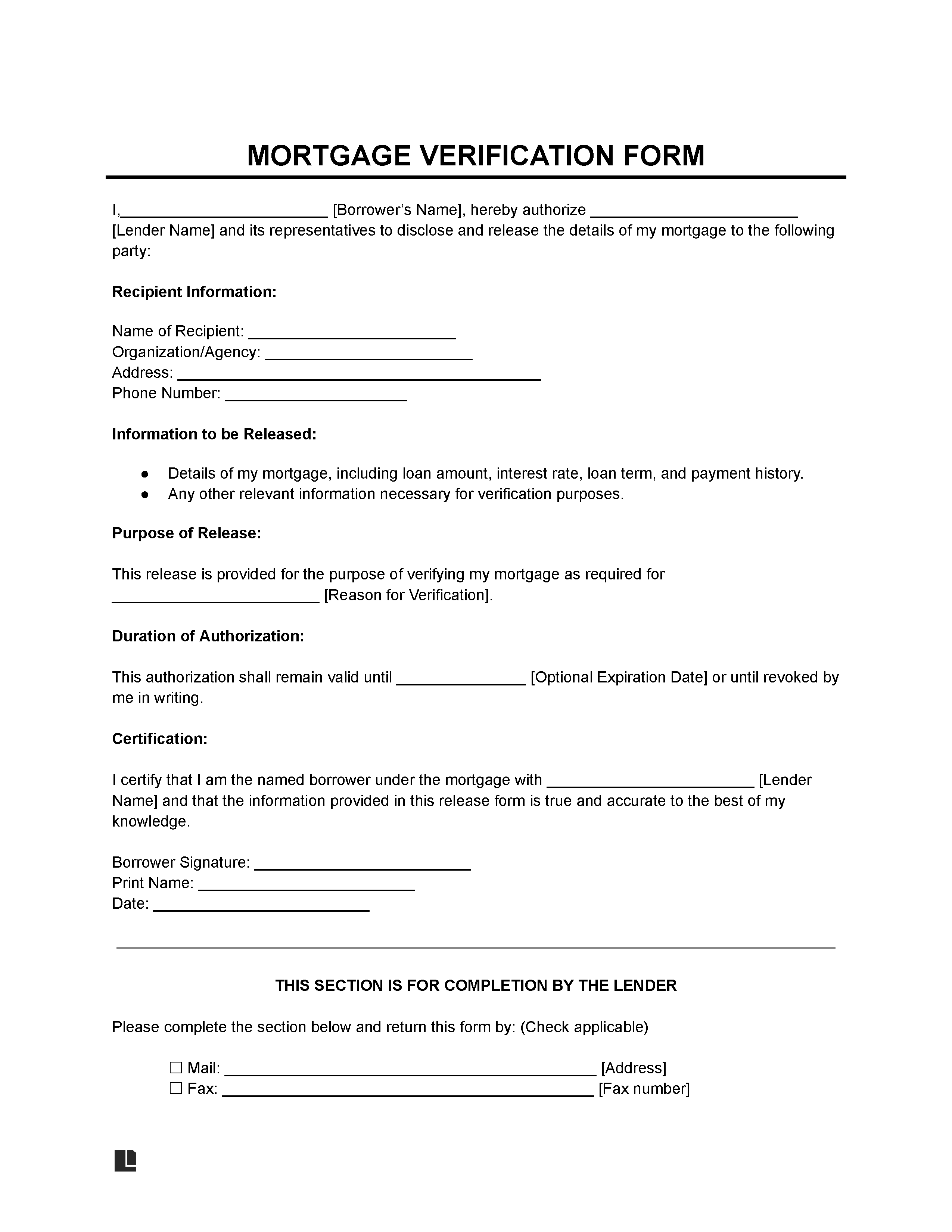A mortgage verification form is a document that a borrower’s current mortgage company fills out to verify their mortgage payment history. The current mortgage company provides details like the account balance, interest rate, and monthly payment amount. It also specifies if the borrower has any overdue payments.
This form serves as a crucial indicator for lenders, as they can review it to ensure a loan applicant has the ability to make consistent and timely payments.
What Is VOM?
VOM (verification of mortgage) is a method lenders use to evaluate a borrower’s existing mortgages and payment history. When a borrower wants to apply for a new home loan, they may have to provide a verification of mortgage, verification of rent, and verification of employment during the preapproval process.
A mortgage verification form is one of the most effective ways to authenticate a borrower’s payment history and assess their loan eligibility. Alternatively, a company offering a mortgage may confirm a borrower’s mortgage payment history by conducting a credit check or reviewing their mortgage statements.
When Is a Mortgage Verification Form Needed?
A mortgage verification form is most useful in these two cases:
- When a borrower applies for a mortgage to purchase a new home.
- When a borrower refinances an existing mortgage with a new lender
Key Elements of a Mortgage Verification Form
Here are the key elements to include in a verification of mortgage form:
- Requesting party’s information: The requesting party fills out their business name, address, and contact information.
- Owner verification statement: The owner issues a statement verifying that the old mortgage company has permission to provide the requested information.
-
Mortgage details: The old mortgage company provides details about the mortgage, such as the following:
- The current mortgage balance
- Whether the mortgage balance includes accrued interest (and how much if it does)
- The mortgage payment
- Principal, interest, taxes, and insurance premiums
- Arrears (if any)
- The last payment date
- The tax account balance (if applicable)
- The mortgage interest rate
- Term renewal date
- Whether it’s an insured mortgage
- The remaining amortization of the mortgage
- Whether the owner can pay out the mortgage (and if there’s a payout penalty)
- Associated penalties with payouts (if any)
- Confirmation statement: The owner’s mortgage company confirms that the provided information is true. They sign their name and date their signature for added authenticity.
How Does a Verification of Mortgage Form Work?
Step 1 – Provision of Initial Information
The requesting party, who is usually a lender that the borrower hasn’t dealt with before, fills out their details on the VOM form. They should include their contact and address information so the owner’s mortgage company can easily contact them.
The requesting party should also obtain the owner’s mortgage company information from the owner and fill it out on the form.
Step 2 – Permission from Borrower
The requesting party should obtain the borrower’s permission. The borrower will print their name on the authorization statement and provide their signature.
Step 3 – Conveyance to the Borrower’s Current Mortgage Company
The requesting party sends the VOM form to the borrower’s current mortgage company.
Step 4 – Confirmation from the Borrower’s Current Mortgage Company
The borrower’s current mortgage company will have a representative review the provided information. If it’s accurate, they’ll sign off on it. If not, they may alert the requesting company that the information is inaccurate.
Step 5 – Return and Review
The borrower’s current mortgage company will return the signed form to the requesting party. The requesting party will review the mortgage information to determine whether they can approve or deny the borrower’s mortgage request.
Depending on their analysis, they may determine that a borrower is eligible for prepayment privileges or other beneficial conditions.
Verification of Mortgage Form Sample
Download a verification of mortgage form in PDF or Word format below:


